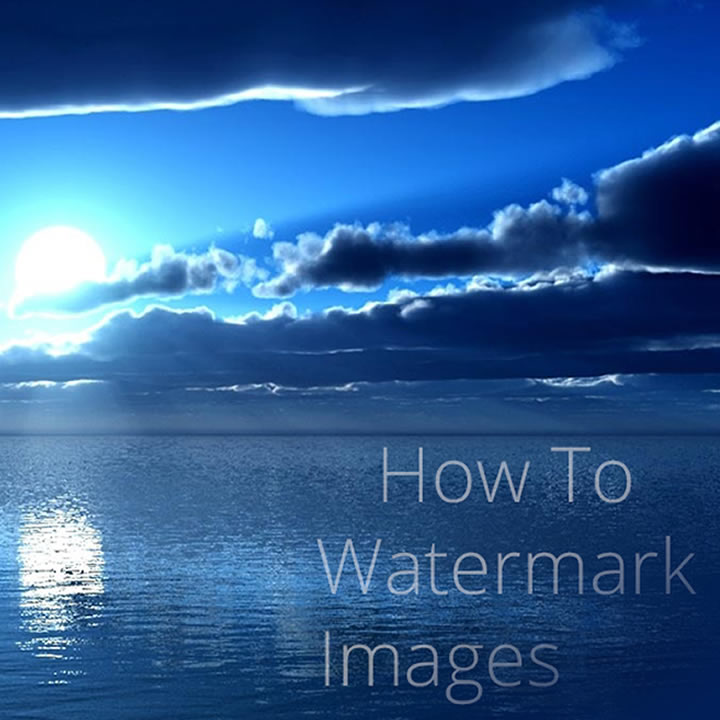Creating any unique photo requires a lot of effort and time. The author tries hard, selects suitable angles, and processes the image. And no photographer wants someone to appropriate their content. There are several ways to prevent theft.
One of the most common is to add watermark to photo. Today we will talk about special signs and how to use them correctly. And also consider alternative ways to protect content on the Internet.
What is the Purpose of Watermarking Images
The main problem of the Internet is simply copying someone else’s content. Anyone can upload a photo and claim it if no copyright is indicated. Preventing someone from copying your videos, photos, and other content is almost impossible. In this regard, various methods of protection against illegal use are essential.
One way to protect your visual content is with watermarks. You should place these translucent inscriptions or logos on your materials and declare authorship to everyone.
Often, watermarks are placed on photos and videos that are being sold. A potential buyer can view the content, make sure that it suits him, and make a purchase. Only in this case will he receive the original image without additional marks.
Another reason to use watermarks is free advertising for you. If a user finds exciting material on the Internet and wants to order something similar from you, the tag will help him contact you.
Unfortunately, everyone can remove a watermark from a photo. AI-related technologies analyze packets of watermarked photos and remove lettering or logos with little to no trace.
However, photo processing services do not stand still – when adding a batch on each new image, the watermark is slightly modified or shifted, complicating the work for AI. It will not be possible to remove the label entirely without a trace.
It is also worth considering that not every user needing a picture will bother with AI or similar technologies. Furthermore, it will be easier for him to find another photo without tags.
What Watermarks Are Best to Use for Application
If you want to add a watermark to a photo, remember the main rule – it should not be too noticeable on the image. But you still need to maintain visibility! Otherwise, even those who need it will not be able to recognize the authorship.
The best option is to turn your label into a logo or make it part of your brand identity.
Most often, professional photographers use watermarks of the following type:
- the company, brand, or personal name;
- URL or link to an account in social networks;
- name with copyright ©;
- logo.
Where Is the Best Zone to Place a Watermark?
The most common option is to put a note about your copyright in the bottom corner of the photo.
Such a watermark will look neat. It will not violate the aesthetics of your frame in any way. But such a label has one significant disadvantage – it can be removed in two clicks in any graphic editor.
You can put a watermark in the center of your photo, but make sure it doesn’t obscure an essential part of your image.
Important! The mark should never be placed on a person’s face in your picture. Otherwise, it will spoil the whole feeling of the frame.
In some cases, characters can fill the entire picture, arranging them in a diagonal line.
To choose the best place to add a watermark to a photo, you need to define the purpose of its application clearly. If the tag is to prevent illegal copying, then use it for most of your photos. If this is how you brand the image, a small inscription in the corner will work.
How to Use a Watermark Without Ruining Your Photo
Many photographers want to add a watermark to a photo just because it ruins the aesthetics of the image. Here are a few tips to help you avoid the negatives:
- The watermark should be of adequate size to avoid distracting attention.
- Do not cover people’s faces and important image details with a sign.
- Avoid those placements where the label will blend into the background.
- Check that the information on the watermark is easily readable by the viewer.
- Do not use dates on the watermark. They have nothing to do with your authorship and will always need to be changed to new ones.
Alternative Ways to Protect a Snapshot
Here are a few ways to help you identify the copyright of a photo without a watermark:
- Make your brand name appear on photos and videos without adding text/logo. A prime example is Pandora. She photographs all her jewelry against the background of an inscription with the brand’s name.
- Post your photos online in low-quality or small sizes. Competitors will not use such images, and the buyer can see everything necessary to decide to buy the original.
The easiest way to protect images is still a watermark. Thanks to programs and services, you can add watermarks to photos and even hundreds of paintings in seconds. The picture will retain its quality and size, and the viewer can see everything that interests him.

